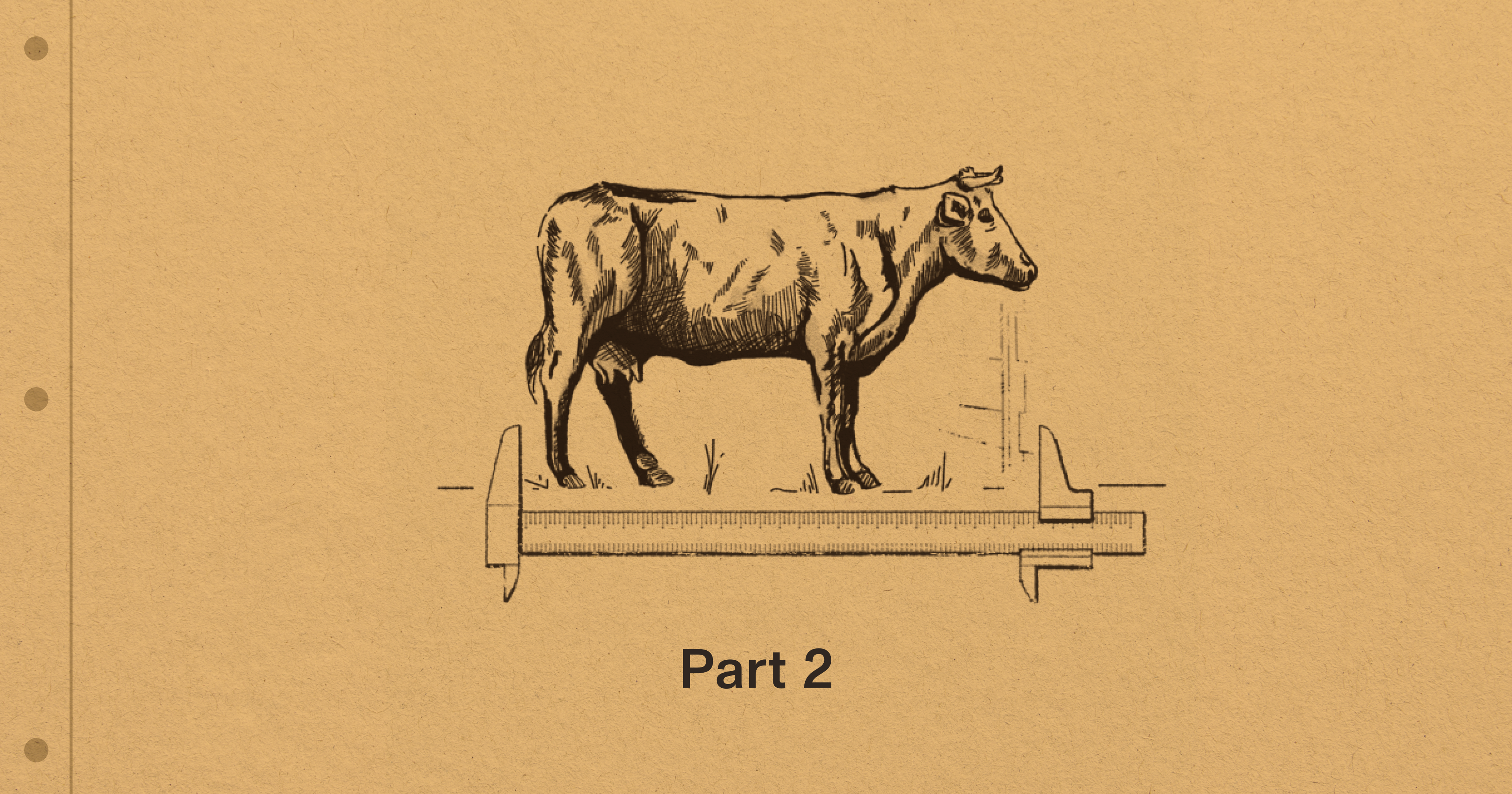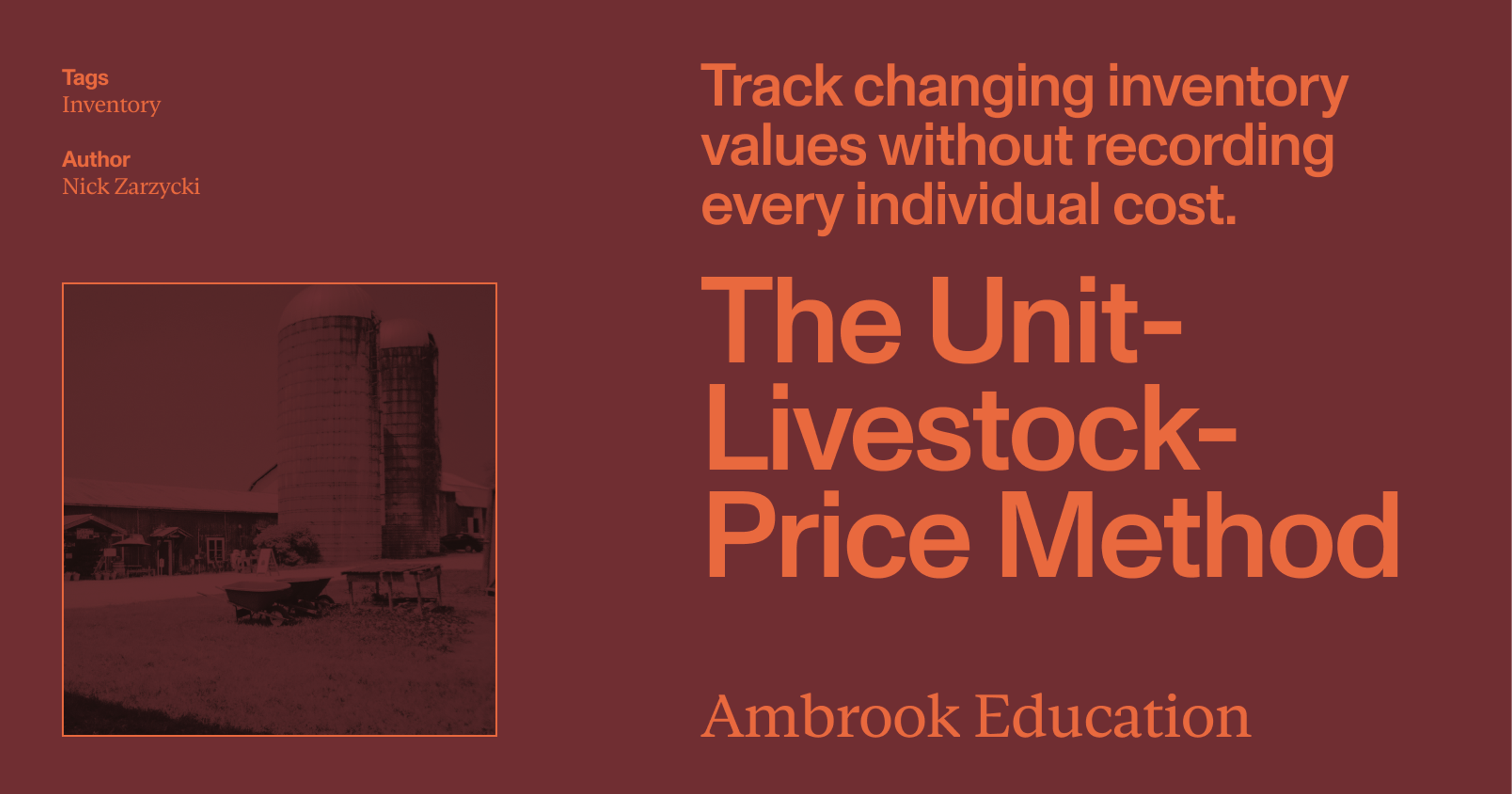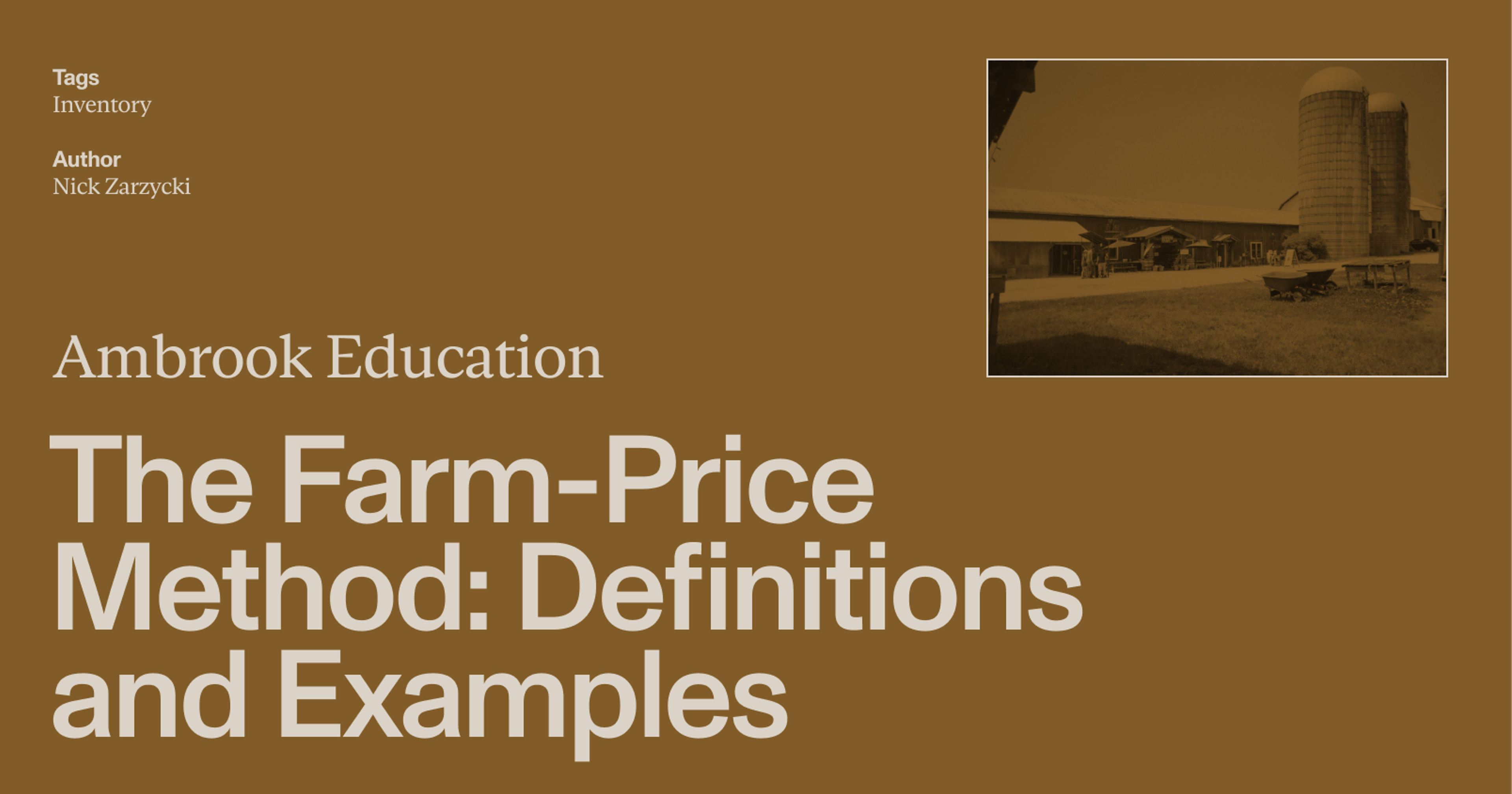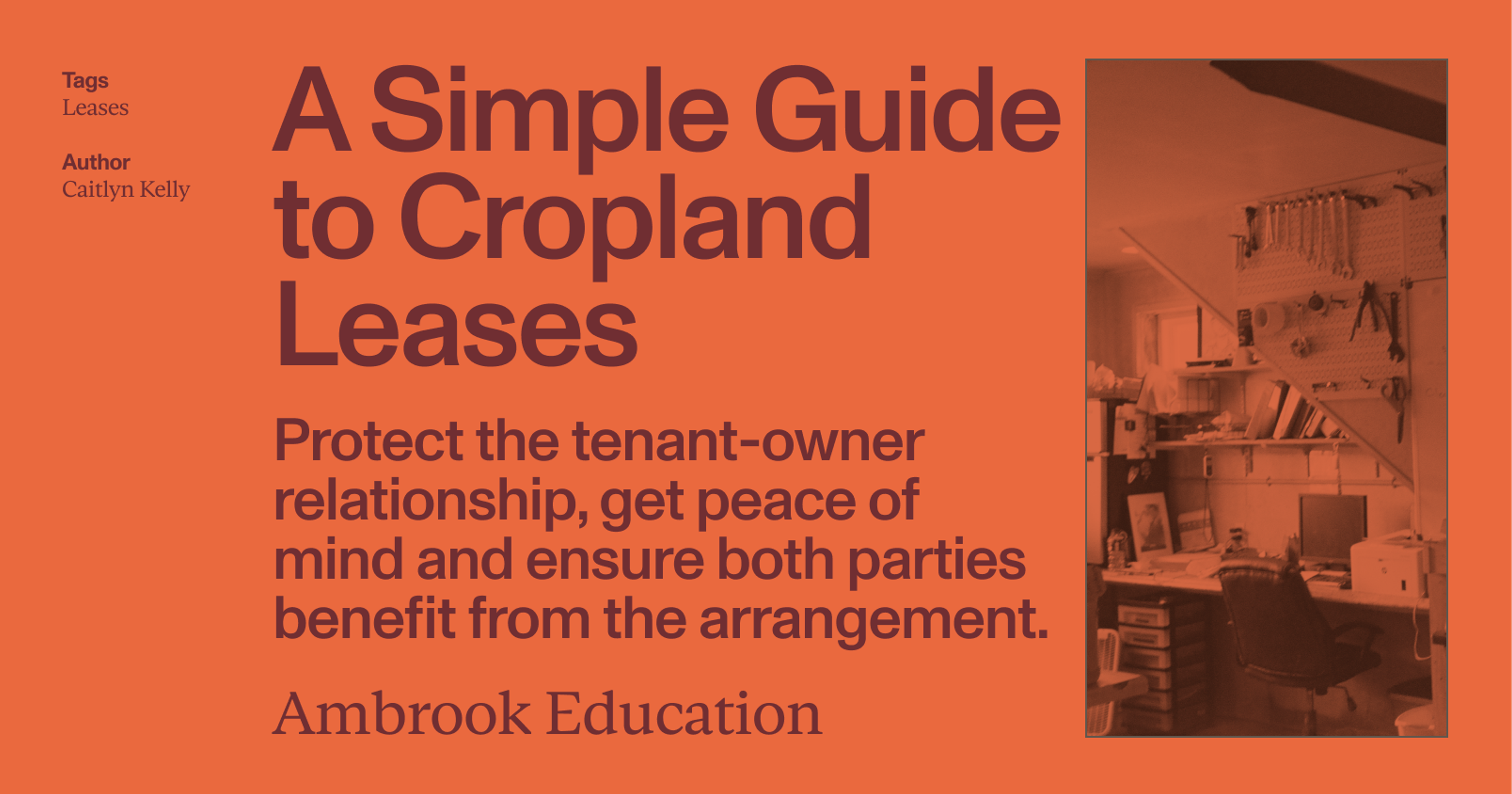Transitioning an agricultural operation—whether a farm, ranch, or other ag-based business—can be a complicated and daunting process. Familiarizing yourself with these basic succession planning concepts is a great place to start.
According to the USDA, only about half of U.S. farms and ranches have a succession plan in place. That’s a missed opportunity, because research shows that producing one increases the financial performance of agricultural businesses and encourages better management practices, all while providing the peace of mind that comes from knowing your land, legacy, and livelihood are set up to endure.
Whether you’re planning to pass your operation to a family member, an employee or someone outside the business, effective succession planning is about more than just the legal documents and accounting or financial tools. It’s about proper communication, long term vision, and keeping family harmony intact, ensures that the business ends up in capable hands, and lays the groundwork for the present and future success of the operation in general.
This resource will walk you through essential concepts and decisions in agricultural succession planning. It includes a checklist to help you get organized, key terms to understand, and links to practical tools and professionals who can help. Whether you’re just getting started or refining an existing plan, this guide can help you move forward with intention.
What is succession planning?
Agricultural succession planning is the process of intentionally transferring ownership of an operation to a successor. In addition to the legal, financial and managerial decisions involved in preparing a business for transfer, succession planning can also be a highly personal process involving tough conversations and decision making within the family.
What steps are typically involved in succession planning?
Step 1: Open lines of communication and build consensus
Begin by opening lines of communication among family members, business partners, and others involved in the operation. It is never too early to start conversations about the future. Early, inclusive discussions help prevent misunderstandings, clarify expectations, and build a shared vision.
Remember that good communication involves not only speaking but also listening and acknowledging each other’s concerns. Encourage family members to define their personal, family, and business objectives, including operational efficiency, financial security, work-life balance, and preparing the next generation for leadership.
This might also be when you start identifying potential successors, which can involve having difficult discussions about who wants to remain involved in the operation and business. Reaching a consensus on values, roles, and goals is critical before moving on to legal or financial planning. If any disagreements or incompatibilities come up, consider working through them with the help of a facilitator who understands family dynamics in agricultural settings.
Your local ag extension can be a valuable resource here, providing information, tools, workshops, and guidance from experts with experience dealing with your type of operation and scale.
For more guidance:
Montana State University’s Transferring Your Farm or Ranch to the Next Generation guide provides a detailed blueprint for navigating inter-generational issues that might arise at this stage.
Land for Good’s Strategies for the Junior Generation guide provides insights for farmers from the younger generation in particular.
Noble Research Institute lays out steps for Who Will Take Over The Ranch.
Step 2: Organize the operation’s financials and legal paperwork
Take inventory of all the financial and legal documents related to the operation. Having a complete and well-organized set of financial and legal documents is essential for effective succession planning.
These materials are different from personal financial records because they reflect the complexities of running an agricultural business, including multiple income streams, shared ownership, land-based assets, and evolving operational risks, all of which require more robust documentation.
Begin by collecting core financial records for the business, such as recent tax returns (usually the last 3–5 years), profit and loss statements, balance sheets, and cash flow statements. Include details about any loans, debt obligations and bank or investment accounts tied to the operation. You’ll also want to gather documents that explain the business structure, such as partnership agreements, operating agreements for LLCs, or corporate bylaws.
Take inventory of all assets and liabilities. This includes land ownership records (titles, leases, easements, conservation agreements), vehicle and equipment inventories, livestock or timber records, and any buildings or infrastructure. Be sure to include water rights, mineral rights, grazing permits, crop or storage contracts, and any other items that reflect the full picture of the working landscape. Document all relevant insurance policies as well, including those for property, liability, crops, and life insurance connected to the operation.
Finally, collect legal documents that affect control, transfer, or continuity of the operation. These include wills, trusts, powers of attorney, buy-sell agreements, and any prior succession or transition plans. Organizing these materials in one accessible location ensures that successors, family members, and advisors can make informed decisions and navigate transitions smoothly.
For more guidance:
Practical support through AgTransitions: A Planning Resource by the Center for Farm Financial Management
Step 3: Analyze the operation’s financial position
Understanding the operation’s finances is an important step in the succession planning process. It helps all parties understand the business’s current financial position, such as profitability, resilience, debt levels and future cash flows, and ultimately determines whether the operation can support multiple households, fund retirement, and transition successfully to the next generation.
If your operation does not currently produce financial statements, this is a good time to consider hiring an ag-specific accountant, bookkeeper, or financial planner. These professionals can help you develop accurate balance sheets, income statements, and cash flow projections. They can also help interpret financial ratios, understand debt service capacity, and identify areas where the operation may be underperforming.
Step 4: Evaluate your options with an expert
With help from a succession planning expert, attorney, or financial advisor familiar with agricultural businesses, start thinking through the nuts and bolts of how the succession process should progress.
Evaluate the different methods of ownership transfer available to you such as through a gradual sale, lease-to-own arrangement, lifetime gifts, or inheritance via a will or trust. An expert can also walk you through tax strategies designed to reduce estate or capital gains tax liabilities, and key legal tools like powers of attorney, buy-sell agreements and operating agreements.
Evaluate each option based on financial impact, stakeholder alignment, practicality, and respect for the current owner’s retirement goals. It’s also important to think through unexpected events like future family disagreements among heirs and successors or business partners, economic shifts, and unplanned disasters.
Engaging a professional with experience in agriculture who understands land-based and resource-driven businesses can be invaluable when navigating these complex decisions. They bring perspective on common pitfalls and creative approaches to multi-generational transitions, especially when balancing land stewardship, profitability and family legacy.
5. Write a detailed succession plan
Draft a detailed succession plan for the operation outlining what exactly the family’s or organization’s long-term goals are and how those goals will be achieved.
Ideally, this plan should be developed with the support of a lawyer or succession planning expert familiar with the unique legal, financial and interpersonal dynamics of your business.
A well-organized succession plan often begins with a cover page and an executive summary that explains the purpose and guiding values behind the transition. Core sections of the plan may include:
Retirement and lifestyle goals for the current owners.
Management transfer strategy, identifying who will take over day-to-day operations and how they’ll be prepared.
Ownership transfer strategy, outlining how and when legal ownership of land, business entities, equipment, and other assets will change hands.
Financial planning for both the business and individuals involved, including income needs, buyout terms, or refinancing.
Implementation timeline, detailing key milestones and transition phases.
Contingency plans that address unexpected events like illness, death, market shifts, or conflict.
Drafting a succession plan can be a highly iterative process–it’s normal to have revisions, multiple conversations, and shifts in perspective. It’s also ideal to revisit earlier decisions and refine them over time, particularly when guided by a trusted advisor or facilitator, and discussed openly with all parties.
6. Implement and monitor the plan
Share the plan with all family members: a sense of openness and shared responsibility can go a long way, helping avoid misunderstandings and ensuring everyone feels included in the process.
Every good succession plan should have a clear timetable, which should be closely followed, with responsibilities understood clearly and carried out diligently. When issues arise that require changes to the plan, it’s essential to stay flexible and open to adjustments.

Spencer Scott Pugh on Unsplash
Succession Planning: key terms
Depending on how formalized your operation is and how much planning you’ve already done, the succession process may introduce new and unfamiliar terms. Understanding key terms can help you navigate conversations with attorneys, accountants, and family members more confidently. Below is a list of succession-related terms to become familiar with:
Business Entity
Your choice of business entity–whether you’re set up as a sole proprietorship, partnership, LLC or corporation–affects both the management and transfer of a business, with each structure offering different benefits depending on the business’s goals. Increasingly, agricultural operations and real estate are held in separate entities, allowing for more flexible management and ownership transitions.
Operating Agreement
Every business entity needs an operating agreement that outlines who has the authority to make business decisions, how those decisions are made, and how management responsibilities will shift over time. It may also detail ownership percentages, capital contributions, buy-in/buy-out procedures, asset use, and profit allocation. A well-drafted operating agreement is essential for managing expectations and ensuring smooth transitions between generations.
Buy-Sell Agreement
A buy-sell agreement, often included in an operating agreement, outlines how ownership will be transferred in events like death, disability, disaster, divorce, or dissolution. It should include fair valuation based on agricultural value, reasonable payment terms, and flexible timelines to ensure the next generation can realistically meet the agreement’s conditions.
Sales Contract
While buy-sell agreements lay the foundation, additional sales contracts are often needed to ensure the smooth transfer of operating and real estate assets. Operating assets are typically transferred over time through internal financing or third-party loans, and sales should be documented with written agreements that fairly reflect both tax and book depreciation. Real estate–usually transferred later due to its higher value–can be leased, purchased in installments, or financed with a mortgage, but the key is having a written contract that offers legal protection beyond a will.
Will
A will is a legal tool used to specify how the operation’s assets—such as land, equipment, livestock, and business interests—should be distributed after the owner’s death. It ensures that ownership transitions according to the owner’s wishes and can help prevent disputes among heirs.
Trust
A trust is a legal arrangement where one person (the grantor) transfers assets—like land, livestock or equipment—to a trustee, who manages them for the benefit of one or more beneficiaries. In an agricultural succession plan, a trust can help ensure a smoother, more private transfer of the operation.
Heir
A person legally entitled to inherit part of an estate, typically through a will or by law.
Successor
The individual or individuals chosen to take over the management or ownership of the operation.
Gifting
The transfer of assets during the owner’s lifetime. Gifting can have tax consequences and may affect eligibility for certain exemptions or step-ups in basis.
Step-Ups in Basis
A step-up in basis is a tax provision that adjusts the value of an inherited asset—like land or livestock—to its fair market value at the time of the original owner’s death.
Estate Tax
A tax levied on the total value of a person’s estate at death. With proactive planning, many agricultural families can reduce or eliminate this burden using exemptions, trusts, or easements.
Capital Gains Tax
A tax on the profit made from selling assets such as land, livestock, or equipment. Succession planning can help minimize capital gains through timing, structuring, or using a step-up in basis at the time of inheritance.
Keep it in the family with Ambrook
With bookkeeping and accounting tools purpose-built for agriculture, Ambrook makes it easy to prepare for whatever lies ahead. With features like automated financial reporting, simplified bookkeeping, and effortless bill pay and invoicing, Ambrook is more than just a farm tax and accounting tool: it takes the guesswork out of running your business. Interested in learning more? Start your 7 day free trial.
Want to learn more about Ambrook?
This resource is provided for general informational purposes only. It does not constitute professional legal advice and may not apply to your specific situation. Consult with professional legal counsel before making any decisions about your business.










